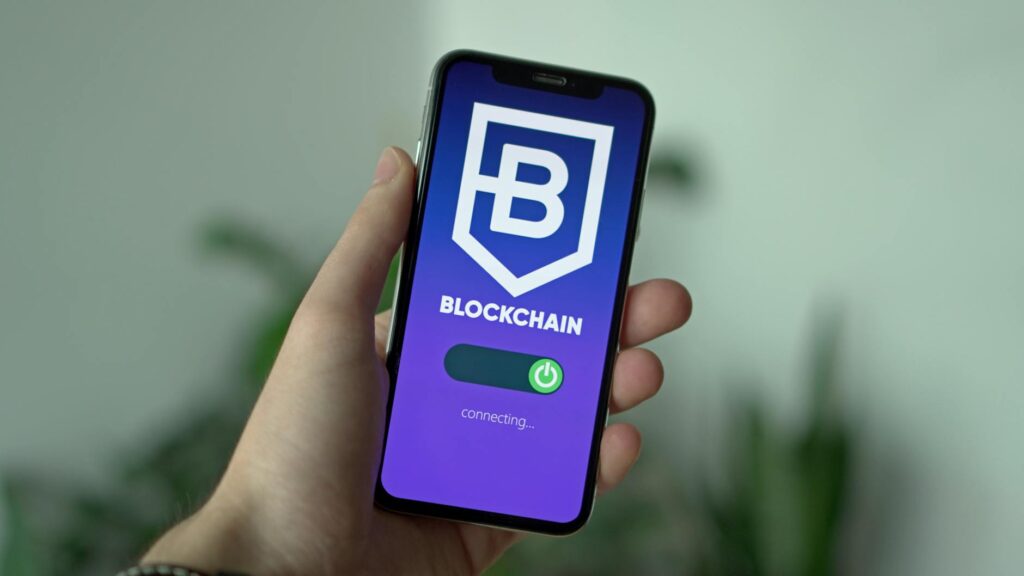The Invisible Threat: How Fake Wallets and Extensions Drain Your Crypto
You’ve done the research. You’ve picked your crypto. You’re ready to take control of your assets and move them off an exchange. The next logical step is a software wallet. You head to the app store or the browser extension store, type in the name of a popular wallet like MetaMask or Phantom, and hit download. Easy, right? But what if the app you just installed, the one that looks identical to the real thing, is a sophisticated trap? This is the growing danger of fake mobile wallets and malicious browser extensions—a problem that has drained millions from unsuspecting users. It’s a silent, digital pickpocket, and learning to spot it is one of the most crucial skills you can develop in the crypto space.
The scary part isn’t some complex, zero-day exploit. It’s much simpler. It’s social engineering. It’s trickery. Scammers prey on our trust in official-looking app stores and our tendency to move quickly. They create pixel-perfect clones of legitimate applications, publish them, and then just wait. They wait for you to download their fake app and, in a moment of excitement or haste, enter your precious 12 or 24-word seed phrase. The second you do, it’s game over. Your funds are gone, transferred to an anonymous address, likely never to be seen again. This guide is your defense manual. We’re going to arm you with the knowledge to see through these deceptions and keep your digital assets exactly where they belong: with you.
Key Takeaways
- Always Verify from the Source: Never download a wallet app or browser extension from a third-party link. Go directly to the official website of the wallet (e.g., metamask.io) and use their verified download links.
- Scrutinize the Details: Look for subtle typos in the name, developer information, and description. Low download counts and a flood of generic, 5-star reviews (or many 1-star warnings) are massive red flags.
- Permissions Are a Tell: A crypto wallet should not need access to your contacts, camera, or microphone for its basic function. Be extremely suspicious of apps asking for excessive permissions.
- Never, Ever Share Your Seed Phrase: No legitimate wallet, support team, or dApp will ever ask for your seed phrase. If you are prompted to enter it anywhere other than during the initial wallet recovery process initiated by you, it’s a scam.
The Multi-Million Dollar Question: Why Do These Scams Exist?
It’s simple, really. It’s about the money. In the traditional banking world, transactions can often be reversed. If your credit card gets stolen, you can call the bank, report fraud, and in most cases, get your money back. The bank acts as a central authority, a safety net. Cryptocurrency, by its very nature, is different. Its greatest strength—decentralization and user sovereignty—is also what makes these scams so devastatingly effective.
When you control your crypto with a self-custody wallet, you are your own bank. This is incredibly empowering. It means no one can freeze your account or block your transactions. But it also means there’s no one to call if you make a mistake. Transactions on the blockchain are irreversible. Once funds are sent from your wallet, they are gone for good. Scammers know this. They know that if they can trick you into giving them access to your private keys or seed phrase, they have a one-shot, irreversible path to your entire portfolio.
The seed phrase (or recovery phrase) is the master key to your entire crypto wallet. It’s a list of 12 or 24 words that can be used to restore your wallet and all its assets on any device in the world. A fake wallet app doesn’t need to hack the blockchain; it just needs to fool you into typing those words into its interface. The moment you hit ‘Submit’, the app sends that phrase directly to the scammer’s server. They can then import your wallet into their own device and sweep every last token out. It can happen in seconds. That’s the prize they’re after, and it’s why they put so much effort into making their fakes look convincingly real.

The Red Flags: How to Spot Fake Mobile Wallets
Mobile app stores on both iOS and Android are battlegrounds. While they have review processes, malicious apps constantly slip through the cracks. They might get taken down eventually, but not before they’ve claimed numerous victims. You have to be your own security guard. Here’s what to look for.
The App Store Isn’t a Fortress
First, abandon the idea that if it’s in the official Google Play Store or Apple App Store, it must be safe. It’s a dangerous assumption. Scammers are clever; they can design apps that initially pass automated checks and only reveal their malicious nature later. They might start as a simple utility app and then push an ‘update’ that transforms it into a phishing wallet. Your first line of defense is deep-seated skepticism. Don’t just trust; verify.
Typos and Weird Branding are Your First Clue
This sounds basic, but it’s surprisingly effective. Scammers often create apps with names that are *almost* right. Think “MetaMaskk Wallet” or “Trust Crypto Walleț”. They might use a slightly altered logo—maybe the colors are a bit off, or the design is fuzzier. They are banking on you being in a hurry and your brain auto-correcting the mistake. Slow down. Look at the app’s name, the developer’s name, and the icon. Do they match the official branding exactly? Go to the official website and compare them side-by-side. If anything seems even slightly off, run. A professional company with millions of dollars in user funds will not have typos in its own name.
Scrutinize Reviews and Download Counts
Here’s where you need to put on your detective hat. A legitimate wallet that has been around for years, like Trust Wallet, will have millions of downloads and a long history of reviews. A fake one will often have a suspiciously low number of downloads—maybe just a few thousand. But what about reviews? Scammers use bots to flood their fake apps with glowing, generic 5-star reviews. Look for patterns. Are all the reviews short and similar? Do they say things like “Good app!” or “Very useful!” without any specifics? This is a huge red flag.Now, dig deeper. Sort the reviews by ‘Most Recent’ or ‘1-Star’. This is where you’ll find the real users screaming for help. You’ll see comments like “SCAM! STOLE ALL MY ETH!” or “Do not install, this is a fake app that asks for your seed phrase.” These are the warnings you need to heed. The presence of even a few of these is enough to condemn an app.

Permissions Are a Tattletale
Before you install an app, or within your phone’s settings, check the permissions it requests. A cryptocurrency wallet needs access to your network (to connect to the blockchain) and storage (to save encrypted data). Does it really need access to your contacts? Your microphone? Your location? Your camera? Unlikely. While some wallets might request camera access for scanning QR codes, a request for your contact list or SMS messages is deeply suspicious. This is called over-permissioning, and it’s a classic sign of a malicious app looking to harvest as much data as possible from your device. Deny permissions that seem unnecessary, or better yet, don’t install the app at all.
Pro Tip: The single most effective way to avoid a fake mobile wallet is to never search for it in the app store directly. Instead, open your web browser, navigate to the official website for the wallet (e.g., trustwallet.com), and use the direct link they provide to the Google Play or Apple App Store. This ensures you land on the one, true listing.
The Sneaky World of Malicious Browser Extensions
Just like mobile apps, browser extensions are a prime target for crypto scammers. A malicious extension can do more than just ask for your seed phrase; it can actively alter the web pages you visit. It could change the destination address you’re about to send crypto to, redirecting your funds to the scammer’s wallet. It can inject fake pop-ups on legitimate websites, asking you to ‘re-sync’ your wallet by entering your seed phrase.
Cloned Extensions and Phishing Pop-ups
The tactics here are very similar to mobile apps. Scammers will upload extensions to the Chrome Web Store or Firefox Add-ons marketplace with slightly misspelled names or copied logos. An unsuspecting user searching for “Phantom” might see two identical-looking options and pick the wrong one. Once installed, the malicious extension lies in wait. When you visit a popular decentralized exchange like Uniswap or a marketplace like OpenSea, the extension can spring to life. It might create a pop-up that looks exactly like a legitimate MetaMask notification, claiming your wallet has been disconnected due to a security issue and that you need to enter your recovery phrase to fix it. It’s a complete fabrication designed to create panic and steal your keys.
Check the Numbers and the Source
Again, numbers matter. The real MetaMask extension has over 10 million users. A fake version might only have a few hundred or a thousand. Always check the user count. Furthermore, click on the developer’s name. It should take you to a page showing other legitimate extensions they’ve created and link to their official website. A scam extension will often have a generic developer name and no history. Just as with mobile apps, the safest path is to go to the official wallet website and use their direct link to the correct store page. Bookmark that official page once you find it. This prevents you from falling for a fake Google ad or a typo in the URL in the future.
A Proactive Defense: Your Crypto Security Checklist
Recognizing fakes is a reactive skill. Let’s talk about being proactive. Building good security habits is the best way to make yourself an unattractive target for scammers.
- Use a Cold Wallet for Serious Holdings: Software wallets (hot wallets) are great for convenience and small amounts of crypto for daily use. But for the bulk of your assets—your long-term holds—a hardware wallet (cold wallet) like a Ledger or Trezor is non-negotiable. These devices keep your private keys completely offline, making it impossible for a fake app or extension to steal them.
- Bookmark Official Sites: Don’t rely on Google searches to find your favorite crypto platforms. Scammers buy ads that appear at the top of search results, linking to convincing phishing sites. Find the official URL for every exchange, wallet, and dApp you use, and save them as bookmarks in your browser. Use these bookmarks exclusively.
- Practice Digital Segregation: Consider using a separate, dedicated browser or browser profile just for your crypto activities. Install only the essential, verified wallet extensions on this browser. Use a different browser for your everyday email, social media, and random web surfing. This minimizes the risk of a malicious extension from an unrelated activity compromising your crypto browser.
- Guard Your Seed Phrase Like Your Life: Your seed phrase should never be typed, screenshotted, or saved on any internet-connected device. Write it down on paper or stamp it into metal. Store it in multiple secure, physical locations. Treat it like a bearer bond for your entire crypto net worth, because that’s exactly what it is. Anyone who has it has your crypto. Period.

Conclusion
The world of cryptocurrency offers incredible freedom and opportunity, but it comes with a heightened sense of personal responsibility. There is no customer service line to call when your self-custody wallet gets drained. The threat posed by fake mobile wallets and malicious browser extensions is real, persistent, and constantly evolving. However, it’s not a threat you have to be a victim of. By adopting a mindset of healthy paranoia, slowing down, and meticulously verifying everything before you download or connect, you can navigate this landscape safely. Remember the key principles: always go to the source, scrutinize the small details, question everything, and protect your seed phrase above all else. Your security is in your hands, and with the right knowledge, you can build a fortress around your digital assets.
FAQ
What should I do if I think I’ve already installed a fake wallet?
If you’ve installed a suspicious app but have not entered your seed phrase, uninstall it immediately and run a security scan on your device. If you have entered your seed phrase into a suspected fake wallet, you must act with extreme urgency. Your wallet is compromised. Do not wait. You need to create a brand new, clean wallet on a secure device. Then, as quickly as you can, send any remaining funds from the compromised wallet to the new, secure wallet address. You are in a race against the scammer. You may need to pay a high gas fee to ensure your transaction is processed before theirs.
Are hardware wallets (cold wallets) completely immune to these scams?
Hardware wallets provide a massive security upgrade by keeping your private keys offline. A fake app on your phone or computer cannot directly steal the keys from a Ledger or Trezor. However, you still need to be vigilant. Scams can still try to trick you into approving a malicious transaction on the hardware wallet’s screen. For example, a fake website might ask you to sign a transaction that you think is for one purpose, but is actually a ‘set approval for all’ transaction, giving them control over your tokens. The key is to always verify the transaction details on the hardware wallet’s physical screen itself before you approve it. The device’s screen is your trusted source of truth, not your computer monitor.


